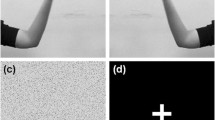Abstract
Motion imaging (MI) refers to the psychological realization of motions without movement or muscle activity; the basis of neural rehabilitation as a brain-computer interface (BCI) technique has been extensively studied. The combination of motor imaging and brain-computer interface technology can take advantage of patients’ willingness to take the initiative to assist them in rehabilitation. Studies have shown that MI combined with BCI rehabilitation training is better than traditional rehabilitation training. Transient visual evoked potentials and motor imaging constructed a hybrid BCI system. Three healthy subjects were tested. EEG signals were superimposed preprocessing according to visual stimulus superimposed frequency and motor guidance frequency respectively. Transient visual evoked EEG segmentation is used as a control signal of choice, the use of wavelet decomposition helps to extract features, and then use BP neural network recognition for classification and identification. Visual guidance, motion-oriented event-related synchronization, or desynchronization feature signals as rehabilitation exercise control signals, are using time-domain sliding energy analysis to extract features, and then using BP neural network recognition for classification and identification. EEG signals collected in the experiment were superimposed signals of transient visual evoked and motorized EEG. There were 300 transient electroencephalogram (EEG) and 100 segments Imagine EEG segmentation. According to the results of the test, the average recognition rate of visual evoked EEG reached 95.42%; the average recognition rate of motor imaginary EEG was 73.08%, but there was a large individual difference in motor imaging EEG signals except 1 Name of the test rate of 85%, the remaining two subjects were less than 70% recognition rate. There is a large individual difference between motion imaging and signal feature recognition, and it takes a long time to train. Therefore, it is necessary to study further the selection of control signals for rehabilitation training. As the threshold feedback signal, controlling the amplitude feedback of rehabilitation training can promote the motivation of participants’ motivation to stimulate and enhance the rehabilitation treatment effect.








Similar content being viewed by others
References
Allison BZ, Brunner C, Altstätter C, Wagner IC, Grissmann S, Neuper C (2012) A hybrid ERD/SSVEP BCI for continuous simultaneous two dimensional cursor control [J]. J Neurosci Methods 209(2):299–307
Percival DB (2004) Wavelet methods for time series analysis [M]. Beijing: China Machine Press 95–143
Gupta A, Nair S, Schweitzer AD, Kishore S, Johnson CE, Comunale JP, Tsiouris AJ, Sanelli PC (2012) Neuroimaging of cerebrovascular disease in the aging brain [J]. Aging Dis 3(5):414–425
Hanakawa T (2016) Organizing motor imageries [J]. Neurosci Res 104(62):56–63
Herrmann CS, Grigutsch M, Busch NA (2005) EEG oscillations and wavelet analysis Event-Related potentials: a methods handbook 2005 [M], Cambridge: MIT Press, 229–259
Huang YB, Xia B (2015) 2D cursor control based on two-class motor imagery [J]. Electronic Design Engineering (3):47–49
Jansen BH, Rit VG (1995) Electroencephalogram and visual evoked potential generation in a mathematical model of coupled cortical columns.[J]. Biol Cybern 73(4):357–366
Kho AY, Liu KP, Chung RC (2014) Meta-analysis on the effect of mental imagery on motor recovery of the hemiplegic upper extremity function [J]. Aust Occup Ther J 61(2):38–48
Kim TH, Kim SS, Lee BH (2016) Effects of action observational training plus brain–computer Interface-based functional electrical stimulation on paretic arm motor recovery in patient with stroke: a randomized controlled trial [J]. Occup Ther Int 23(1):39–47
Li Y, Long J, Yu T, Yu Z, Wang C, Zhang H, Guan C (2010) An EEG-based BCI system for 2-D cursor control by combining mu/Beta rhythm and P300 potential [J]. IEEE Trans Biomed Eng 57(10):2495–2505
Li Y, Pan J, Wang F, Yu Z (2013) A hybrid BCI system combining P300 and SSVEP and its application to wheelchair control [J]. IEEE Trans Biomed Eng 60(11):3156–3166
Liu KC, Wong RS, Kwan IW et al (2009) A randomized controlled trial of mental imagery augment generalization of learning in acute poststroke patients [J]. Stroke 40(6):2222–2225
Nilsen DM, Gillen G, Gordon AM (2010) Use of mental practice to improve upper-limb recovery after stroke: a systematic review [J]. Am J Occup Ther 64(5):695–708
Page SJ, Levine P, Leonard A (2007) Mental practice in chronic stroke: results of a randomized, placebo-controlled trial [J]. Stroke 38(4):1293–1297
Page SJ, Dunning K, Hermann V, Leonard A, Levine P (2011) Longer versus shorter mental practice sessions for affected upper extremity movement after stroke: a randomized controlled trial [J]. Clin Rehabil 25(7):627–637
Pfurtscheller G, Müllerputz GR, Schlögl A et al (2006) 15 years of BCI research at Graz University of Technology: current projects [J]. IEEE Trans Neural Syst Rehabil Eng 14(2):205–210
Pfurtscheller G, Allison BZ, Brunner C et al (2010) The hybrid BCI [J]. Front Neurosci 4(30):30
Schaechter JD (2004) Motor rehabilitation and brain plasticity after hemiparetic stroke [J]. Prog Neurobiol 73(1):61–72
Yin E, Zhou Z, Jiang J, Chen F, Liu Y, Hu D (2013) A novel hybrid BCI speller based on the incorporation of SSVEP into the P300 paradigm [J]. J Neural Eng 10(2):026012
Yuan H, He B (2014) Brain-computer interfaces using sensorimotor rhythms: current state and future perspectives [J]. IEEE Trans Biomed Eng 61(5):1425–1435
Acknowledgments
This work was supported by grants from the National Natural Science Foundation of China (81171866), the National Key Basic Research Program of China (No.2014CB541602) and the Research Program of southwest hospital (SWH2014ZH03).
Author information
Authors and Affiliations
Corresponding author
Additional information
Publisher’s note
Springer Nature remains neutral with regard to jurisdictional claims in published maps and institutional affiliations.
Rights and permissions
About this article
Cite this article
Feng, Z., He, Q., Zhang, J. et al. A hybrid BCI system based on motor imagery and transient visual evoked potential. Multimed Tools Appl 79, 10327–10340 (2020). https://doi.org/10.1007/s11042-019-7607-3
Received:
Revised:
Accepted:
Published:
Issue Date:
DOI: https://doi.org/10.1007/s11042-019-7607-3




